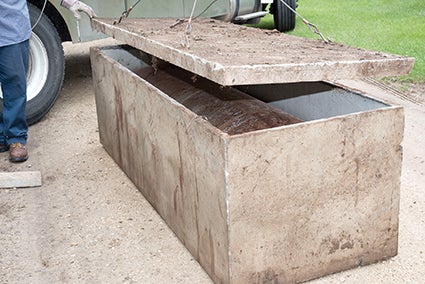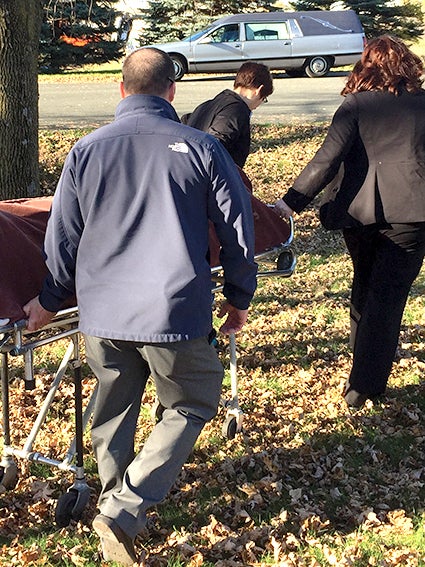A quest for answers; Families of the missing asked to submit DNA to help identify remains
Published 8:24 am Thursday, July 13, 2017

- This jawbone is one of the remains exhumed by the Minnesota Bureau of Criminal Apprehension in an effort to identify unidentified remains. Photos courtesy the Minnesota Department of Public Safety
By Tad Vezner
St. Paul Pioneer Press
ST. PAUL — State public safety officials recently dug up remains of five unidentified bodies from several east metro graveyards and tested them against national DNA databases but couldn’t find a single match.
Now they’re calling on family members of missing persons to come forward to provide DNA samples for comparison.
In order to obtain those samples, the Minnesota Bureau of Criminal Apprehension has scheduled a series of “DNA collection opportunities” in mid to late July.
“Immediate family is by far the most powerful specimen or sample we can get,” said Catherine Knutson, a deputy superintendent with the bureau who oversees its forensic science division, during a press conference Tuesday. “There are obviously more missing than we have family members.”
The deceased, including two women and three men, were found in or near St. Paul between 1976 and 1991, a time when DNA testing was not used.
Their remains were exhumed from Oakland and Elmhurst cemeteries in St. Paul and Prairie Oaks Memorial Eco Garden Cemetery in Inver Grove Heights.

Officials with the Bureau of Criminal Apprehension exhume remains.
They include:
•A woman whose body found June 11, 1976, in the Mississippi River near Lilydale.
•A woman whose body found July 20, 1977, in the Mississippi River near Childs and Warner Roads in St. Paul.
•A man whose body found Feb. 7, 1985, in an abandoned building at Kellogg Boulevard and Wall Street in St. Paul.
•A man’s body found April 18, 1985, in the Mississippi River east of the Ford Dam.
•A man’s body found Aug. 27, 1991, in a wooded area west of Highway 61 in St. Paul.
Additional unidentified remains have been identified but DNA samples have yet to be obtained from them.
“That’s still in the planning process; we still need to work through some details to get them,” Knutson said.
In all, the BCA has obtained roughly 100 sets of human remains that have yet to be identified and has already completed DNA profiles for about half of that 100. With a profile, officials have hope of identifying the remains by matching the DNA with that of a relative.
The other half of the 100 have been located, but attempts to complete DNA profiles were unsuccessful for many.
“There’s just nothing available for us to work with,” Knutson said.
Four of the remaining fifty have yet to be exhumed, Knutson added.

Officials with the Bureau of Criminal Apprehension exhume remains.
But for the five on hand, the BCA hopes more families will come in, and bring — in addition to their own DNA, which would be obtained with a cheek swab — photos, dental records or items such as toothbrushes or hairbrushes that might contain DNA from their missing family members.
The DNA will be entered into state and national databases to compare against the profiles of thousands of missing remains — both in Minnesota and beyond. BCA officials said the family member profiles will remain in their databases to compare against remains obtained in the future.
The DNA collection events will take place at the following times and places:
•Saturday, 10 a.m. to 2 p.m., at BCA headquarters, 1430 Maryland Ave. in St. Paul
•Tuesday, July 18, 4:30-6:30 p.m., at the Duluth police department at 2030 N. Arlington Ave.
•Wednesday, July 19, 4:30 to 6:30 p.m., at the BCA’s Bemidji office at 3700 Norris Court NW
•Thursday, July 27, 4:30-6:30 p.m., at the Mankato Public Safety Center at 710 Front Street
Family members are asked to come in person, BCA commissioner Drew Evans said, because “we need to ensure there’s a solid chain of custody, that we know the person we got that sample from was the person we’re meeting with.”
Those unable to come to the events can contact the BCA to make other arrangements to meet in person, Evans said.
BCA officials said the DNA profiles provided by family members could likely be completed and uploaded to the national database by early fall.
The BCA obtained federal grant funding in 2013 to support the identification program. Five sets of remains have since been identified through the program.





